|
Gauguin's work was, until just 26 January 2020, on display at the National Gallery. Gauguin fits pleasingly into many of our clichés of an artist, particularly of the 19th Century. He was not appreciated in his time, selling very little work. He died in poverty (in his 50s) and was achingly misogynist, leaving his family to exploit young girls in Tahiti. He's paintings are pretty good though. I don't intend to talk about him so much but instead about the exhibition. Being impressionist it is of course super-colourful, as can be seen by the picture of Jesus in the Garden in Olives (above). In a breathtaking act of narcissism, Jesus bears more than a passing resemblance to the man himself. I really like the thin stripes of colour all pointing in the same direction. The show starts with self-portraits and then moves in chronological fashion through Gauguin's life, starting in Paris and then Brittany, Tahiti, back to Paris and finally Tahiti. The painting above is from the early Paris era. I don't intend to talk about the show in such a fashion. I have just picked out a few of my favourite pieces.
Let us return to the beginning, with this picture of two people meeting at a gate (above right). I believe the male figure is the artist himself. The skeletal trees and the white faces of the figures give a menacing feel to the painting, which sets off the purple-strewn ground around it. There are, in addition, a number of portraits. They range in subject but there are the usual obligatory portraits of middle-aged men in black, as in the above left. I do like his swirly moustache, which stands out nicely against that opalescent green background. In addition to Van Gogh, Gauguin was a friend of another artist called Merjer de Haan. There were a number of portraits and pictures of de Haan in one room, and I particularly liked one done quite simply in pencil. Gauguin also did a fine line in wood sculpture. An example is the sculpture of de Haan (above right). It is like some grumpy spirit or angry tree god. Guaguin then left to go to Tahiti, where he famously sleept with a number of disturbingly young people. He married one of them and painted her (above left). It is a striking picture. That glowing yellow contrasts superbly with the flowing purple backdrop. The way he captures her pose, with a sense of movement. It is the kind of painting you can gaze at for hours. He produced a number of paintings in this period, playing with marrying Tahitian tradition and Western art. Of course he produced some classical works such as this self-portrait (above right). This gallery included more wooden sculptures, figures flowing out of the wood. Plenty more yellow.
I have shown two of them. They were amongst my favourite in the show and I spent most of my time looking at them. The one above was probably my favourite piece on display. The flowers are beautifully rendered and the colour scheme is excellent.
So despite his obnoxious personality his stuff is worth seeing, so go and see it.
0 Comments
Leave a Reply. |
Archives
June 2024
Categories |
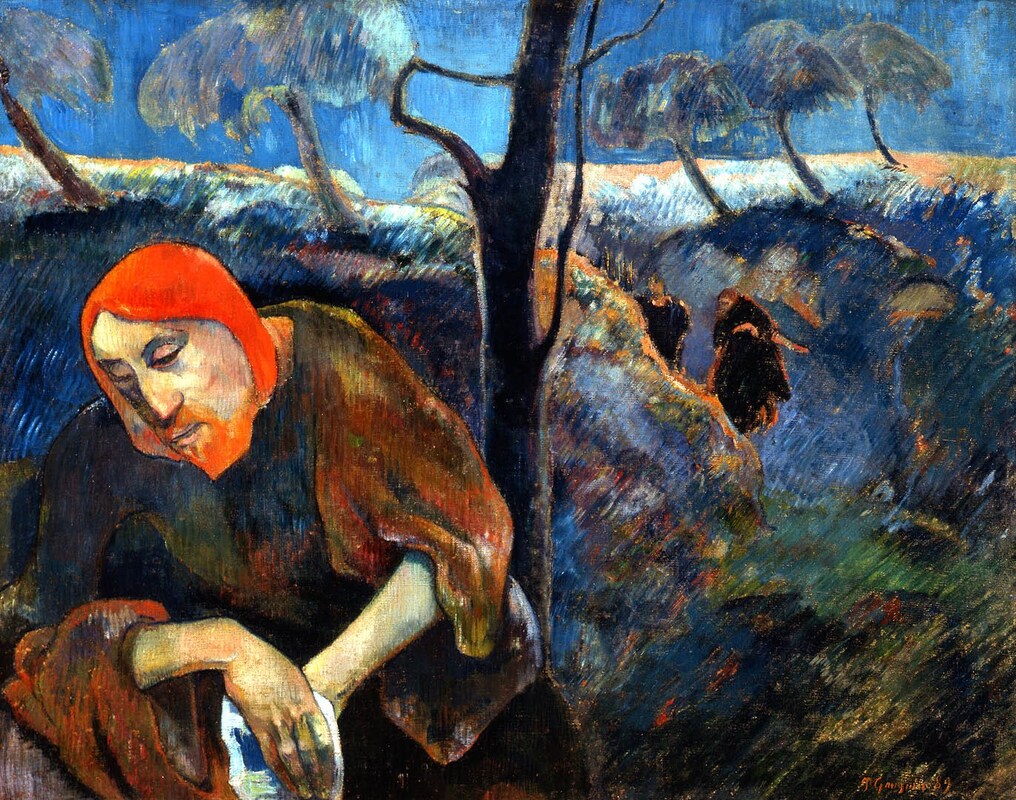
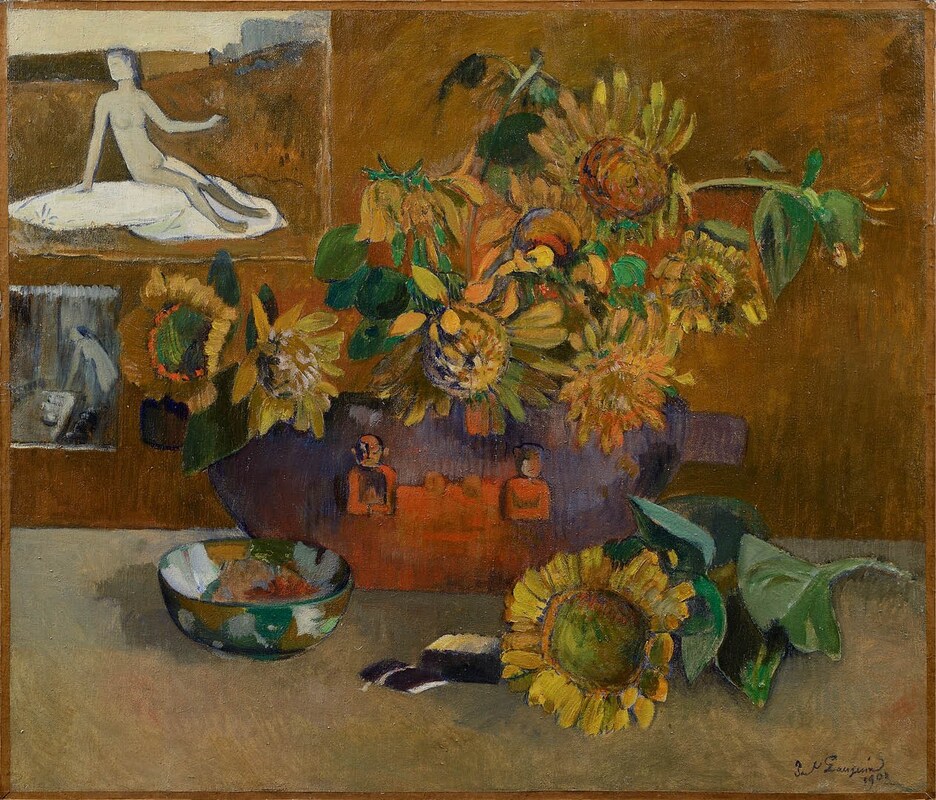
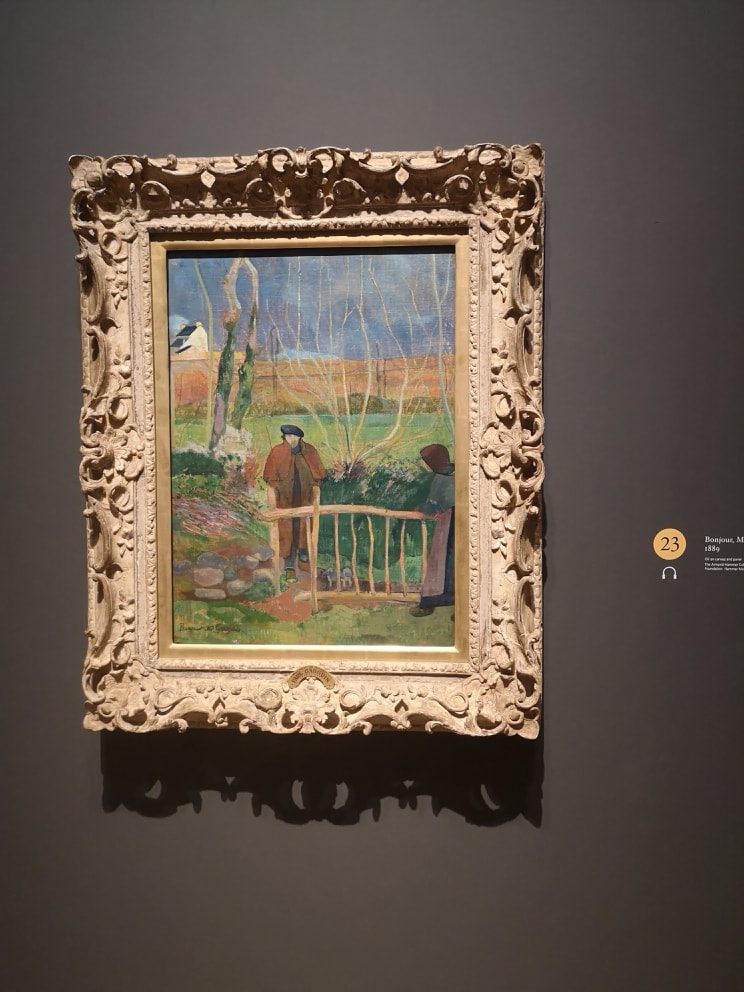
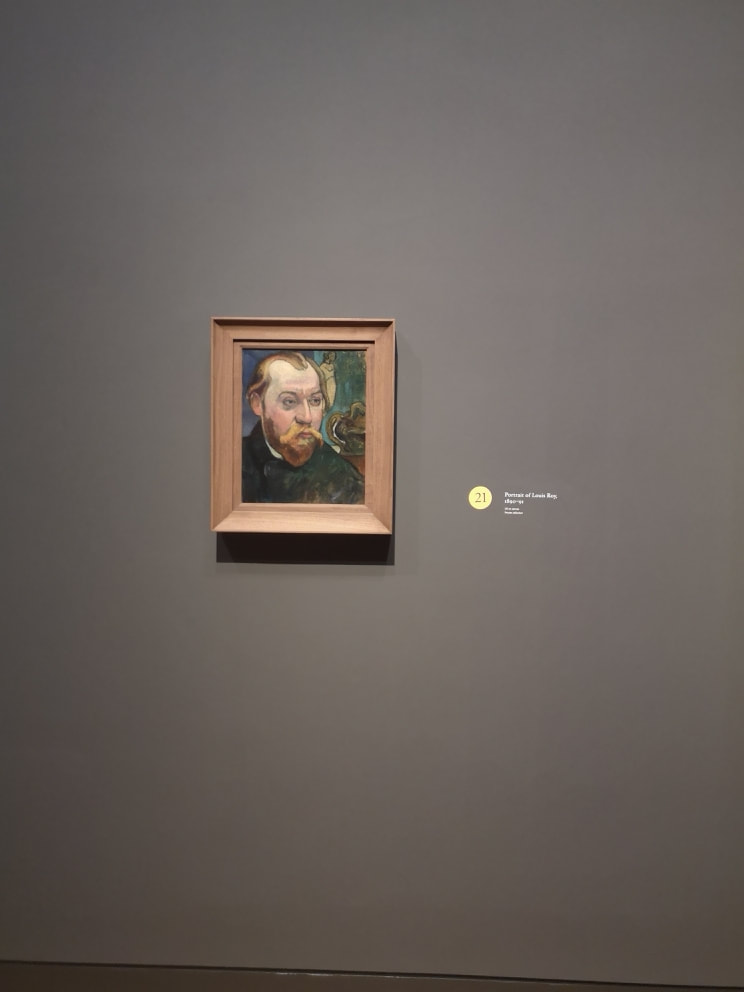
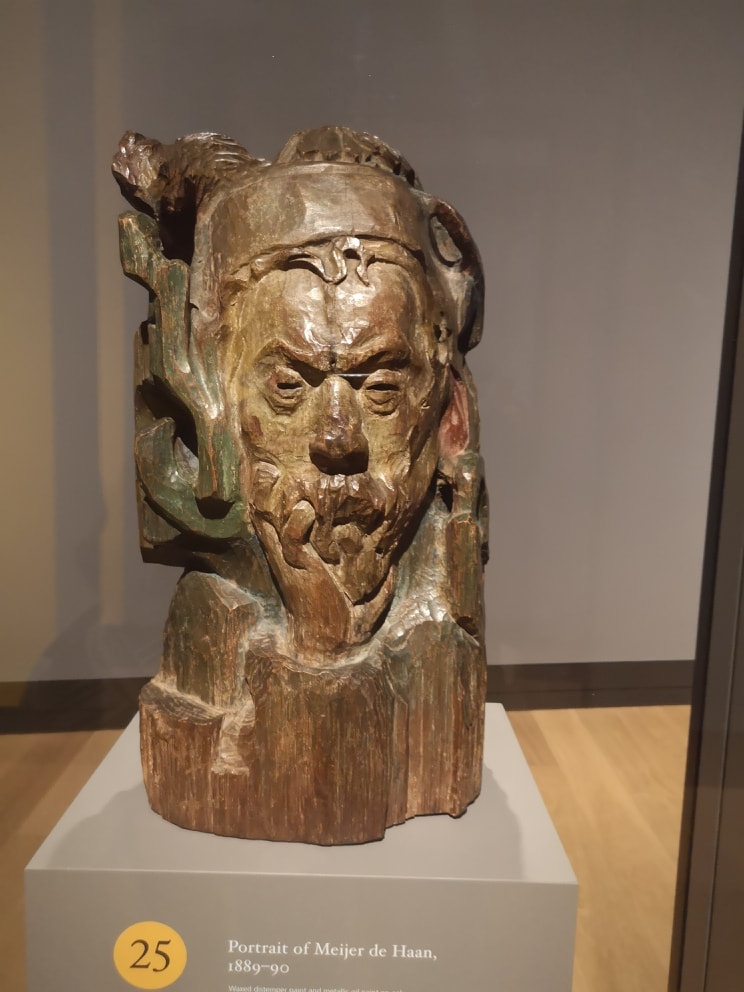
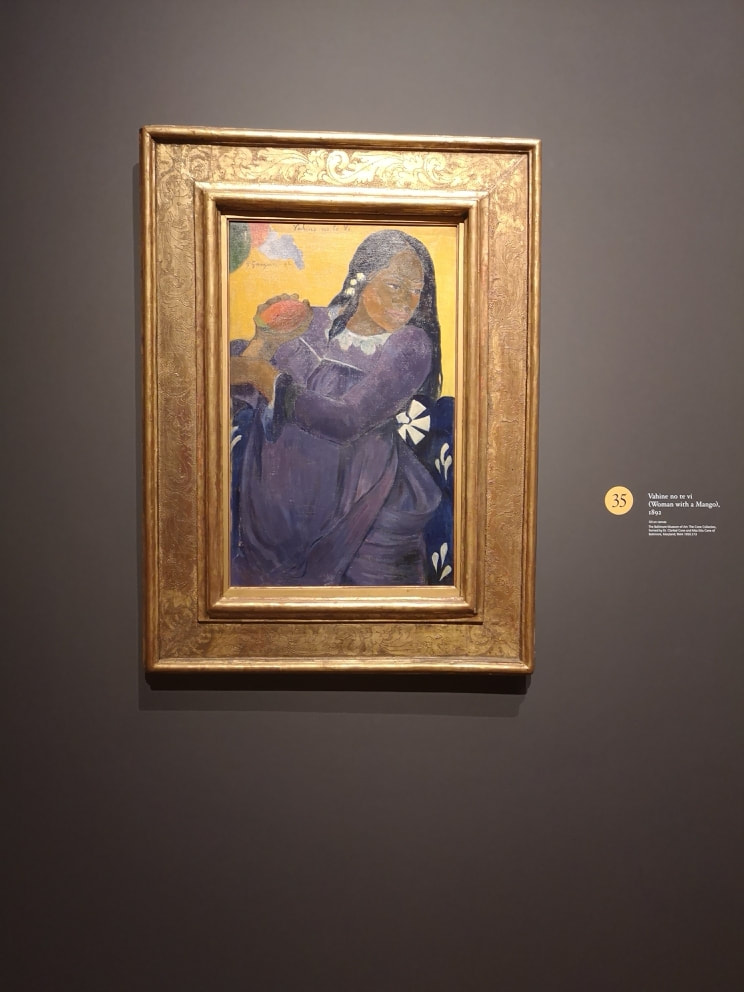
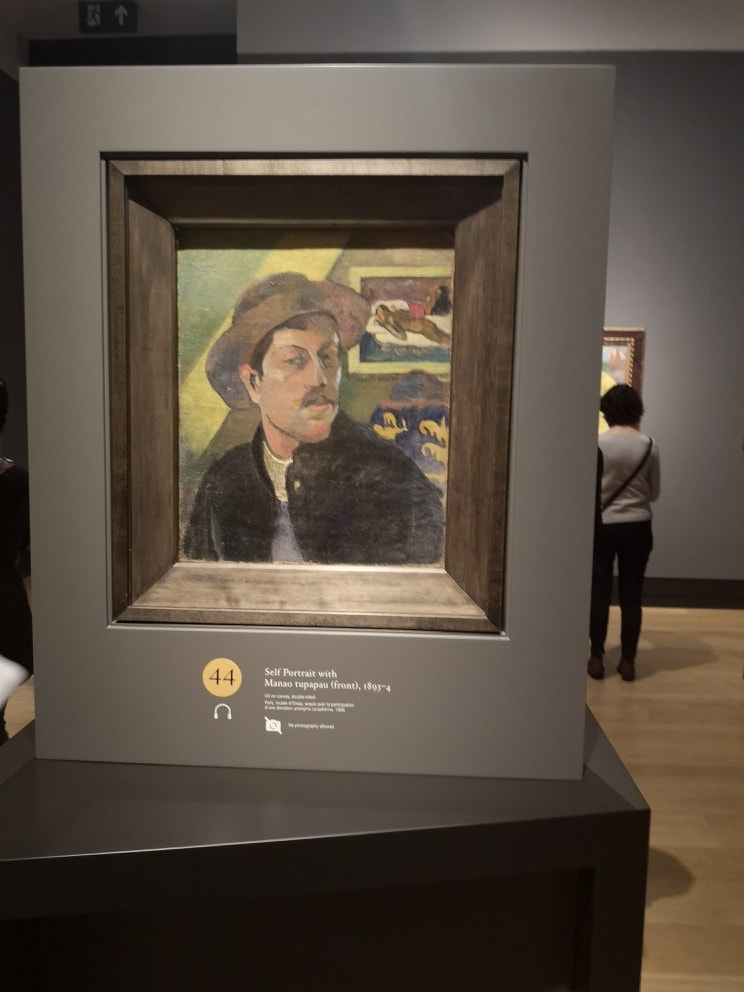
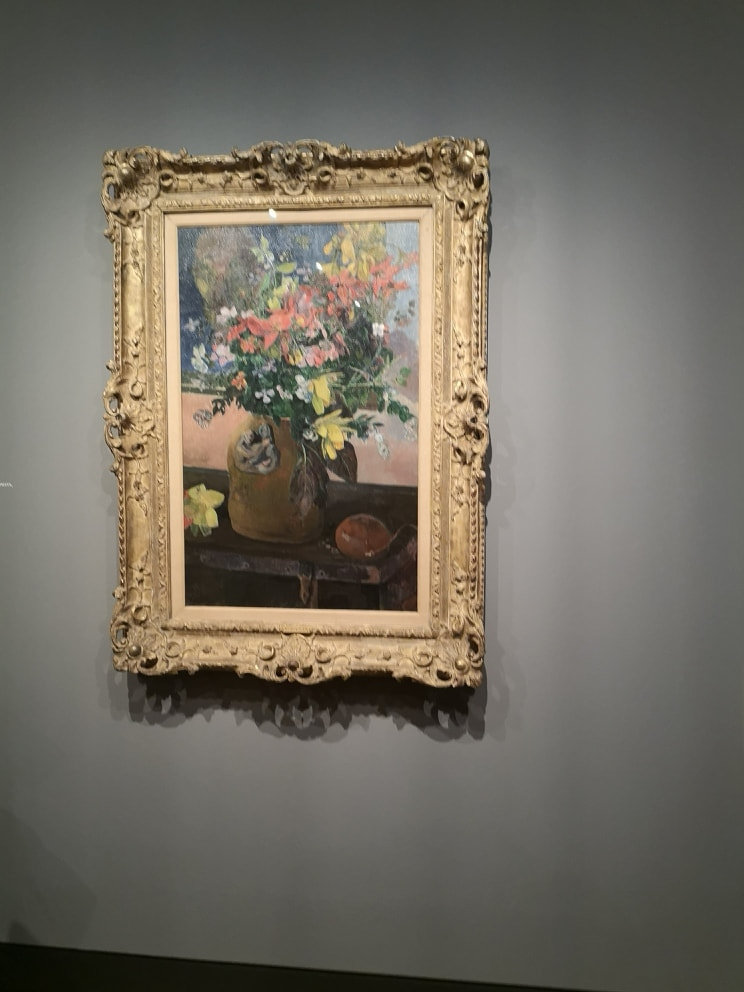
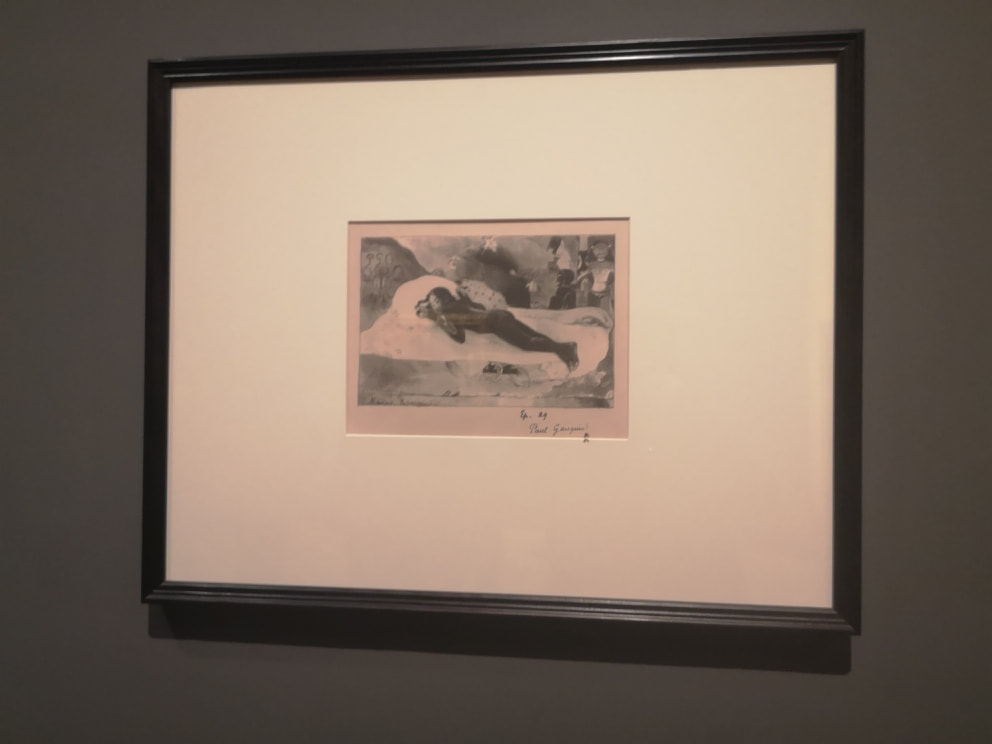
 RSS Feed
RSS Feed